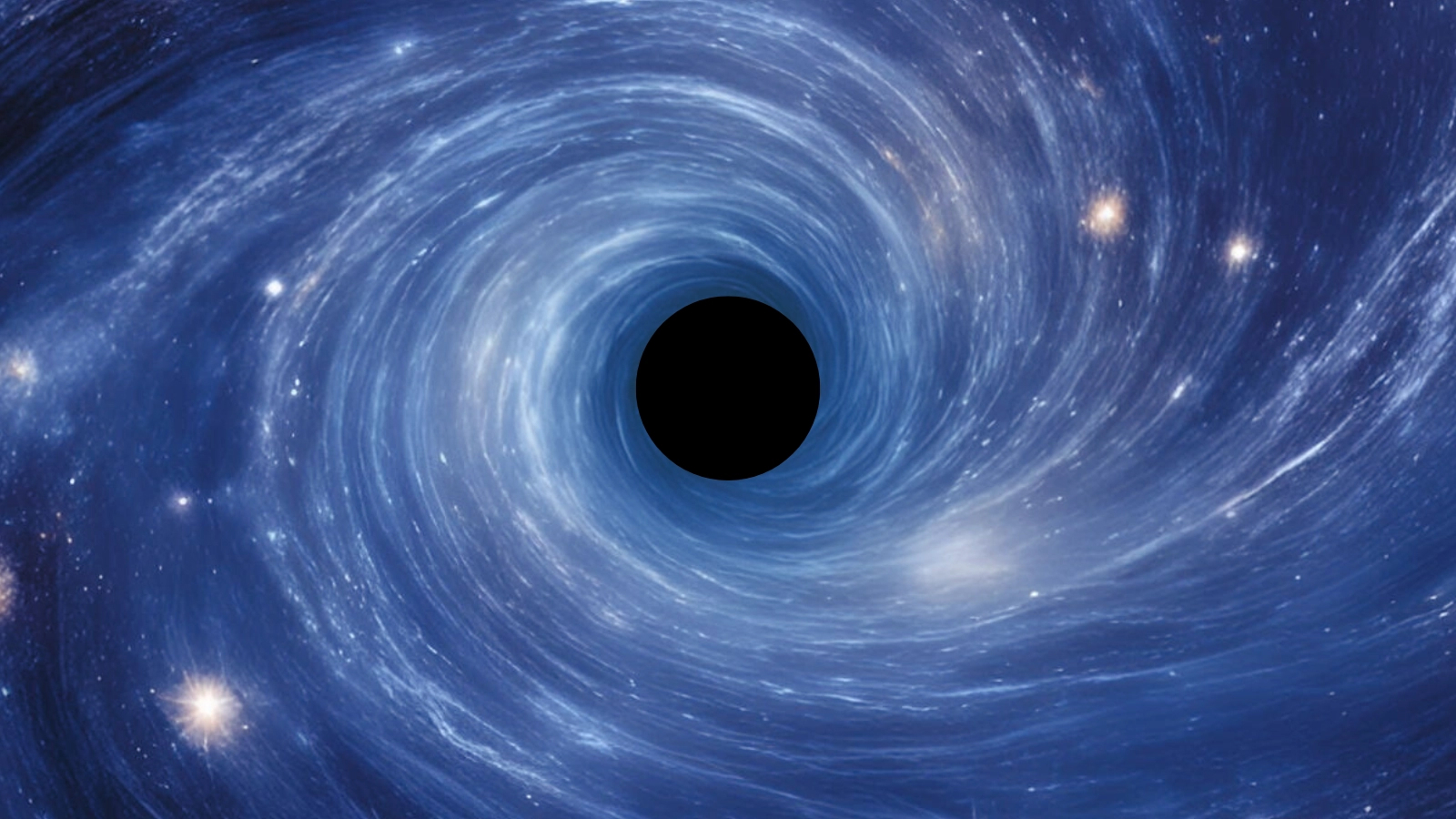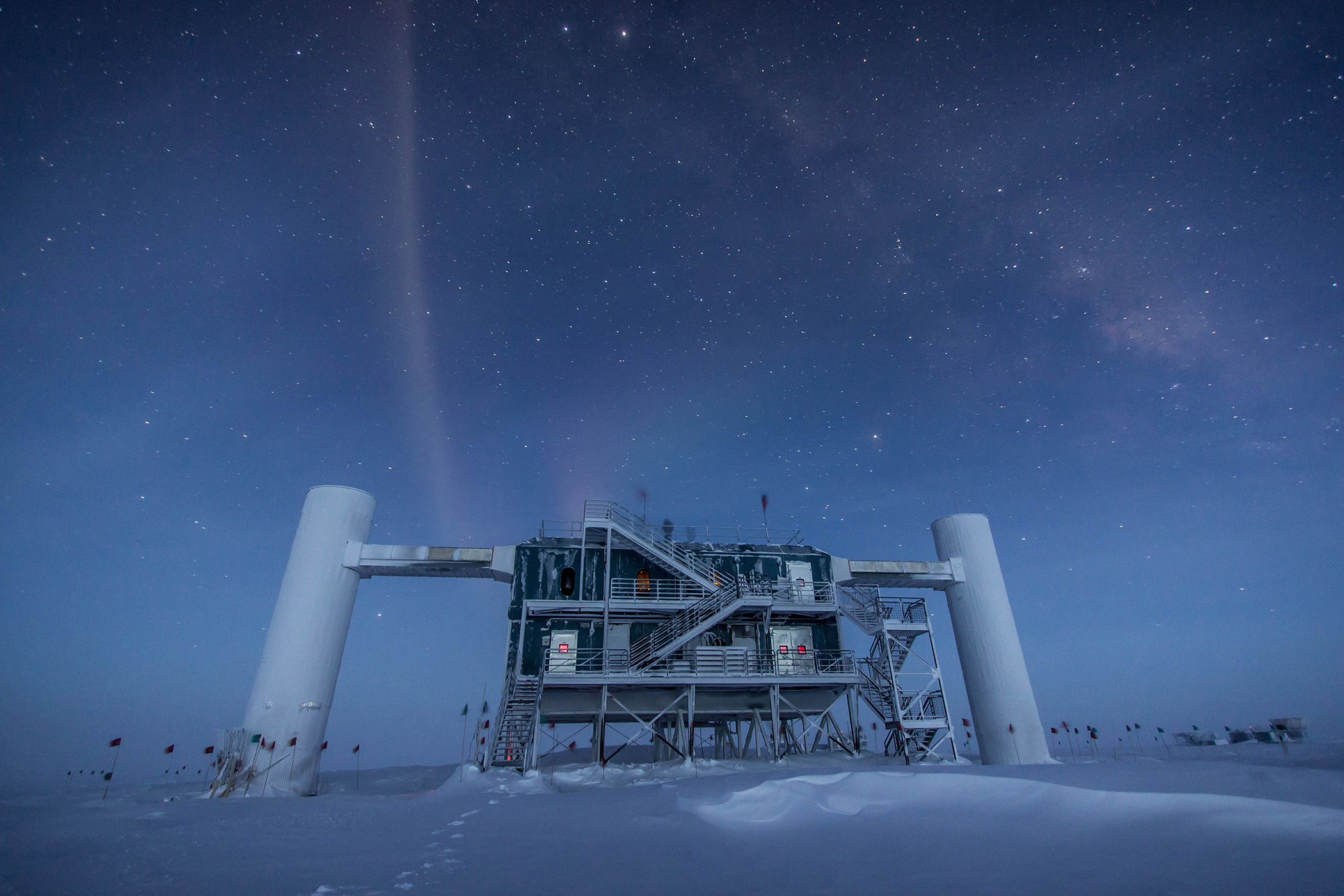When you buy through links on our site , we may earn an affiliate commission . Here ’s how it go .
When you ’re searching high and low for your lose keys , sometimes the places where you do n’t see them can help you narrow down where they might be . In science , the search for new physics often claim a similar course .
In December 2015 , scientists at theLarge Hadron Collider(LHC ) — the world ’s largest speck accelerator — recollect theymay have see a clue of a steel - young particle , and with it , a window into physics beyond what scientists make out now . But the findings work out to be ghosts , a statistical fluke .

The ATLAS detector in the Large Hadron Collider picked up this jet of particles (yellow and green bars) when protons collided at energies of 13 TeV.
Yet despite the negative result , the fact that there is nothing there shows that reigning theories of atom purgative are solve remarkably well , experts sound out . But that lead only deepen the whodunit physicists are trying to solve , and crusade them to find out just where young particles or forces could be hiding . [ The 9 Biggest Unsolved Mysteries in Physics ]
" The defective news is [ the measurements ] do n’t show anything , " order theoretic physicist Matt Strassler . " The sound news is that it did a really good job of not render anything . "
Strassler himself recently give a talk at the European Organization for Nuclear Research ( CERN ) , which consort the LHC , on what can be learned from such results , or lack thence . " It ’s like if you squint trying to see something — sometimes you ’ll see something , and sometimes it will be an phantasy , " Strassler told Live Science .

The ATLAS experiment at the Large Hadron Collider is one of the machine’s two big all-purpose detectors.
High-energy collisions
The LHC uses about 9,600 massive magnets to circularize stream of proton within a 17 - land mile - recollective ( 27 kilometers ) ring . These protons are accelerated to near the speed of light and then smashed together . The resulting collisionsunleash cascade of subatomic particlesand radiation that can provide clue about the edifice blocks of topic .
After a two - year hiatus for upgrades , theLHC was fired up again last yr , this sentence running at eminent vitality .
What scientists found in December was that two catching system , one called ATLAS and the other holler CMS , found a odd hump in the plots of Energy Department versus " event . " ( upshot are essentially detection of photons or particles . )

The excrescence was gravid enough that it look interesting to scientists . If material , it could have been evidence of a atom nobody has seen before at zip of 750 billion negatron V ( GeV ) . During the LHC ’s current running game , it can reach energies of almost 13 trillion negatron V ( TeV ) .
Data from the debris
When bang up together , the Department of Energy theprotonscarry will turn into particles , each with a characteristic energy . Most of these particles are abruptly - last , though , and decay into other particles and photons .
For this reason , particle detections are often indirect . This is what pass in 2012 , whenscientists light upon the Higgs boson , the simple molecule that is thought to explain how other particles get their hatful . And this is why the most recent bump was so challenging .
But now , new information from CMS , collected since December , shows that the 750 GeV bump was likely an illusion — a statistical artifact of the kind that sometimes crop up in experiments like this , said Michael Peskin , a theoretic physicist at the SLAC National Accelerator Laboratory . [ Beyond Higgs : 5 Elusive Particles That May Lurk in the Universe ]

Even back in December , some physicists — Peskin among them — had doubts . He observe the teams work on the LHC issued a statement that read , in effect , they were n’t issuing one . " The financial statement said the statistical significance was too low to report an observance , " Peskin said .
But that does n’t mean it ’s a useless result , Strassler state . Nor does it mean the spate of paper theorizing about what the observation could be are just wrong and not worthy of consideration , he added . Such employment can often yield of import insights down the road .
" This process of being sure nothing has been missed is go to take longer than observe something , " he say . " Sometimes things at 750 GeV might be relevant for a particle 10 time small that has n’t been discovered yet . "

On the bright side
Negative consequence like this are also significant because they show just where the conceptual problem with current theories might lie . In this eccentric , the theory is the Standard Model , the reigning theory in cathartic that describes the bevy of subatomic particle that make up the world . [ Wacky Physics : The Coolest Little Particles in Nature ]
But phenomenon such as sour subject , the inconspicuous stuff that is thought to make up 85 percent of the matter in the creation , suggest that theStandard Model is n’t terminated . And physicists and cosmologist have a hard clock time explaining why the world is dominate bymatter rather than antimatter , or why the Higgs field that gives things mass is the enduringness that it is .
" For the Higgs boson , we end up having to say , ' That ’s the way it is , ' " Peskin said . " And I do n’t like own to say that . " There has to be a cause , he contribute , that the Higgs subject field looks the way it does , and the Standard Model by itself does n’t really provide the solution .

This is where electronegative results can be utilitarian . For example , there are many extensions to the Standard Model that nominate something calledsupersymmetry , or SUSY . These theories say that every speck has a yet - to - be - identify pardner particle . The beingness of such partners would help physicists understand why the Higgs boson has the economic value it does ( and it prognosticate that there is a supersymmetric partner to the Higgs , as well ) .
Over the years , negative solution have helped constrict down the SUSY models that work , Peskin said . " Basically every SUSY manikin on the table in the mid-2000s is now except , " he said . This does n’t mean SUSY is wrong , but it help research worker focalise the theoretic work .
Lessons from history
The history of science records a number of negative results that led to greater sixth sense . In 1887 , Albert Michelson and Edward Morley guide an experimentation to find the aether , a propose medium that was thought to deport light waves . If the aether live , the f number of light should have changed count on the instruction of the beam . It did n’t , and days later , Albert Einsteinused that damaging answer as part of the formulation of his theory of relativity , which says it is space - clock time itself that changes in social club to keep the speeding of luminosity the same in all reference frames . [ 8 way you could See Einstein ’s Theory of Relativity in Real Life ]
The yield was the way people believe of light Wave . " perhaps [ light ] waves were different from other undulation we knew about , " Strassler said , in that they did n’t need a sensitive to travel through .
Strassler note that nobody has made this kind of rudimentary leap yet . In the fount of Michelson - Morley , for instance , it was see that clean waves do n’t need a medium . For atom physicists , it ’s not even clear what the insight has to be . It ’s possible the problem is technical and scientist just need better accelerators and detectors to get hold newfangled particle . Or it could be conceptual , as it was for Michelson and Morley , Strassler said .

Some physicists say the negative result probably wo n’t have any significance beyond just being a statistical trace . " We know that the Standard Model is not a complete theory , and that it has to be go at some energy scale . But , theoretically , there are meg of possible extension , and we require a clue from experiment which is the correct one , " say Adam Falkowski , a theoretical particle physicist at the Centre National de la Recherche Scientifique ( CNRS ) in Paris , and co - author of a newspaper depict the implication of the 750 GeV bump being a real effect .
Still , the outcome could aid in some path , said Nhan Tran , a postdoctoral research buster at the Fermi National Accelerator Laboratory in Illinois . “It contributes to our cognition of what ’s not there , " he order . " Helping us focus on where we should be appear . "
For his part , Peskin allege he thinks the comparison between current experiments at the LHC and early piece of work to find the propose ether is a bit overstated . " Michelson [ and ] Morely bumble away the previous hypothesis , " he sound out . The Standard Model is on firmer ground , he said . However , he add that results like this one make him less confident about musical theme like SUSY . " On Tuesdays , Thursdays and Saturdays , I think in it , " he aver . " On other days , I opine it could be anything . "

At the same sentence , the LHC is a powerful new instrument , Peskin said . " Our ability to detect SUSY particles is a lot more herculean , " he said . " If you believe they are there , it might turn up in the next yr . "
Original article onLive Science .












